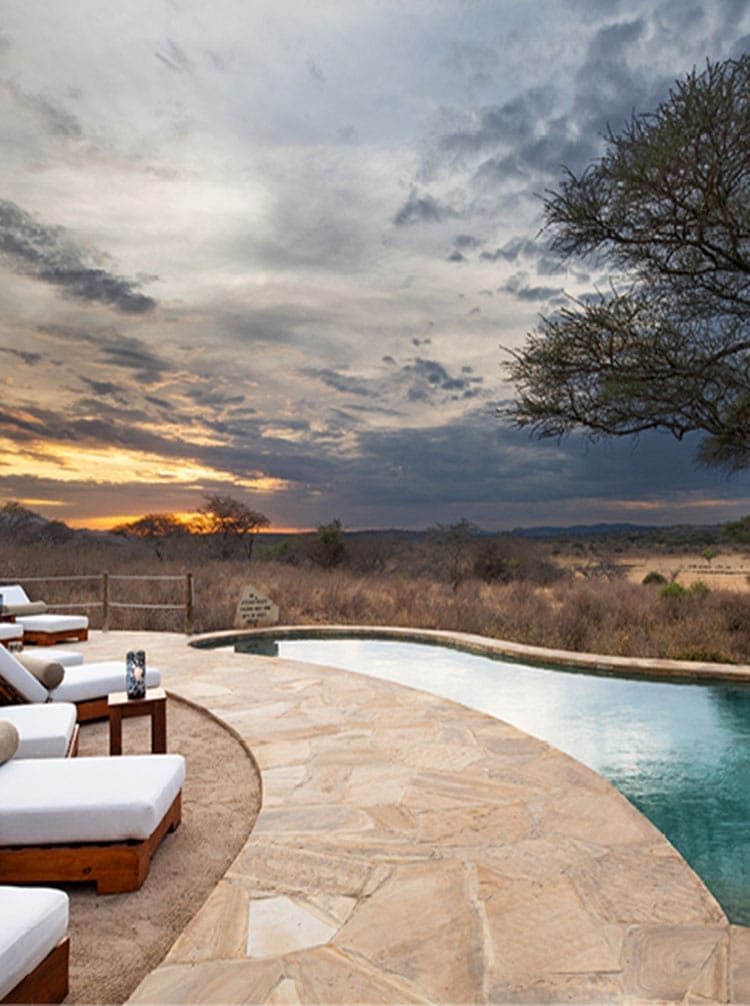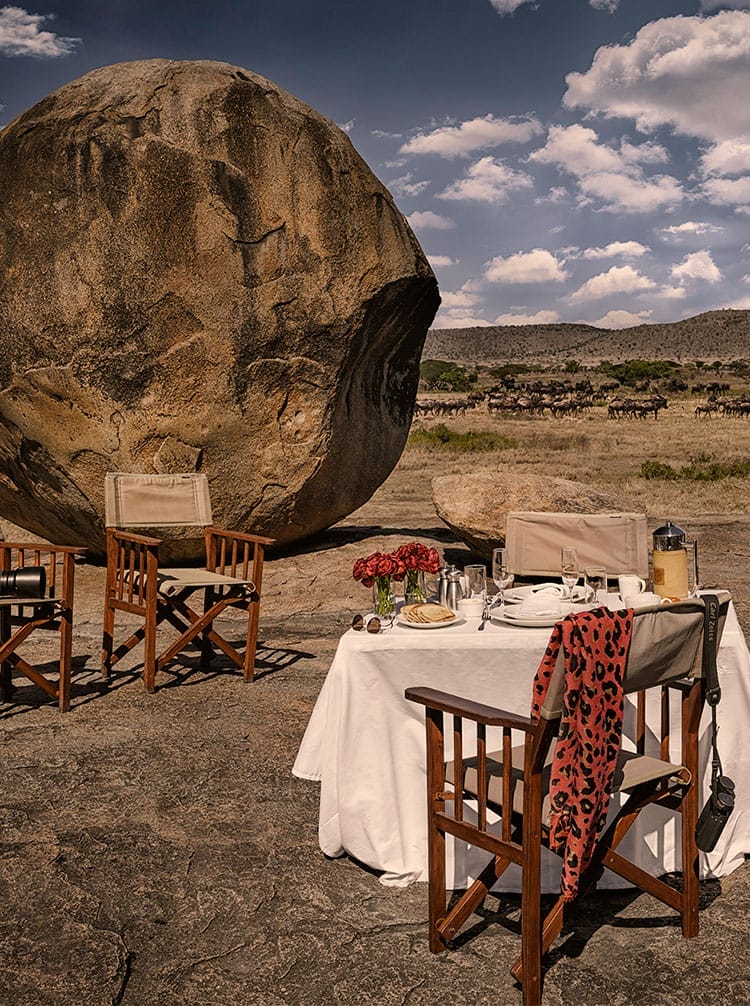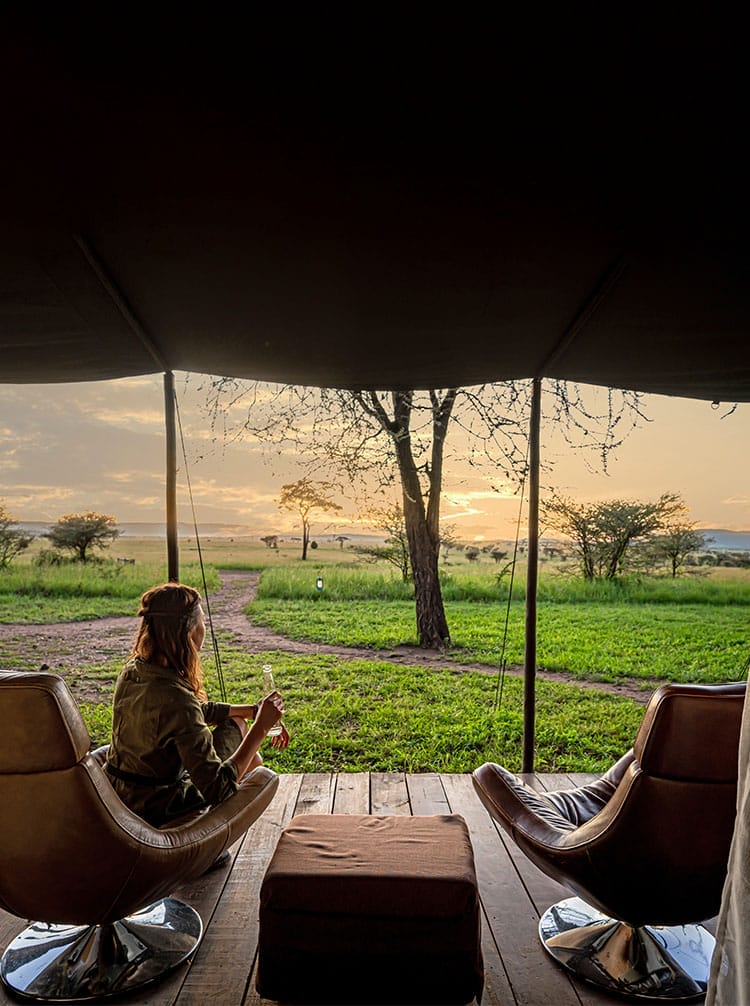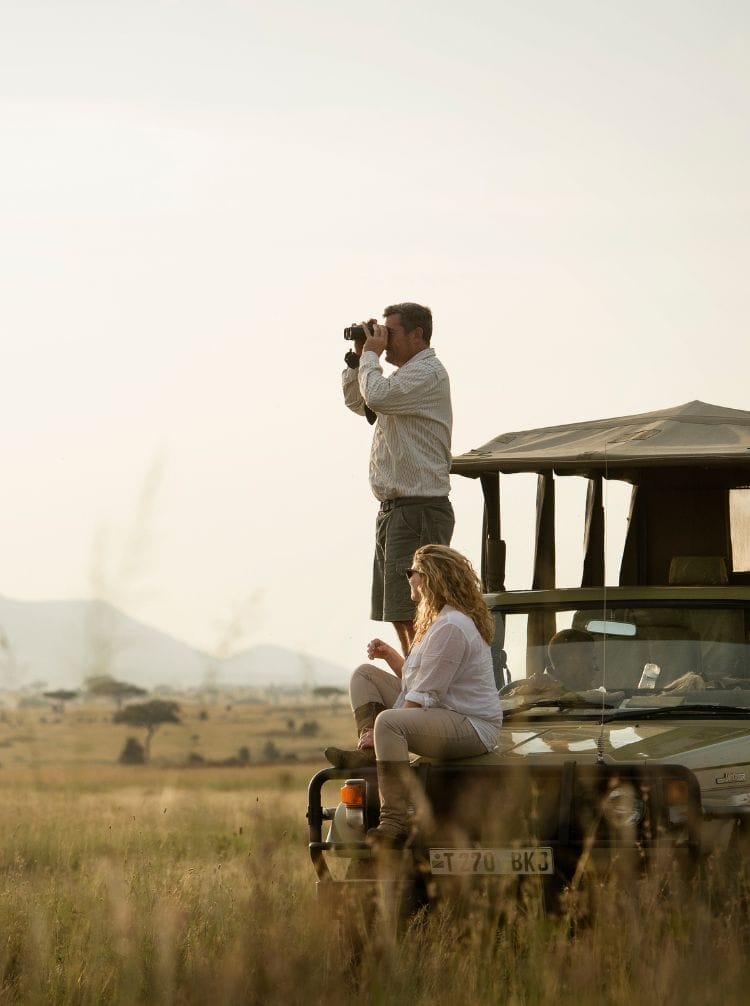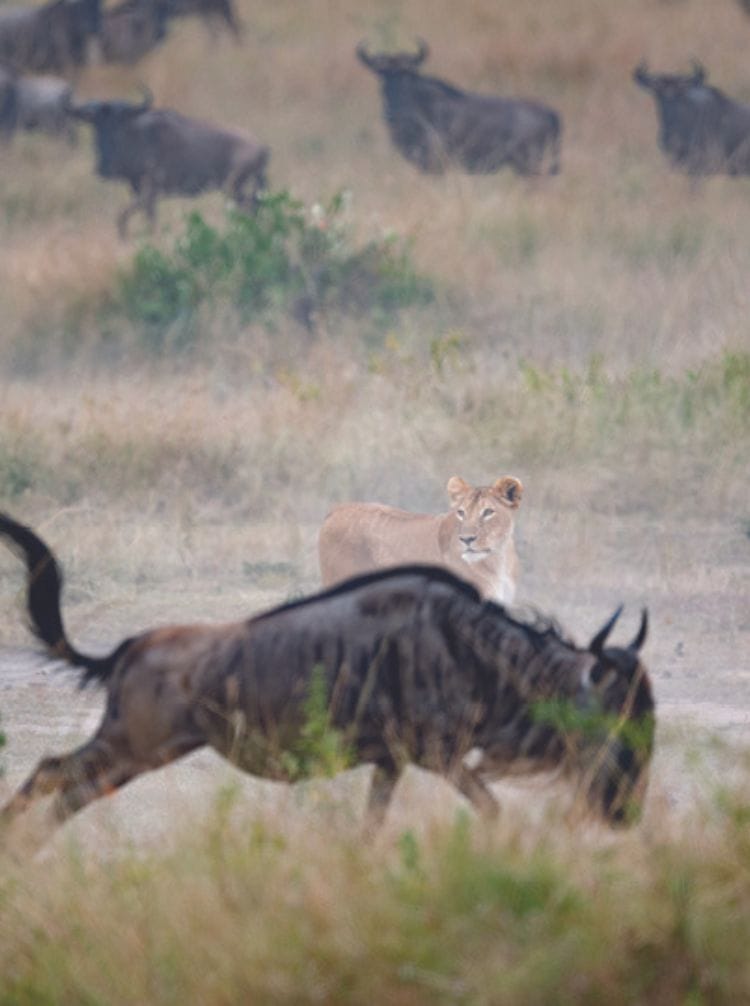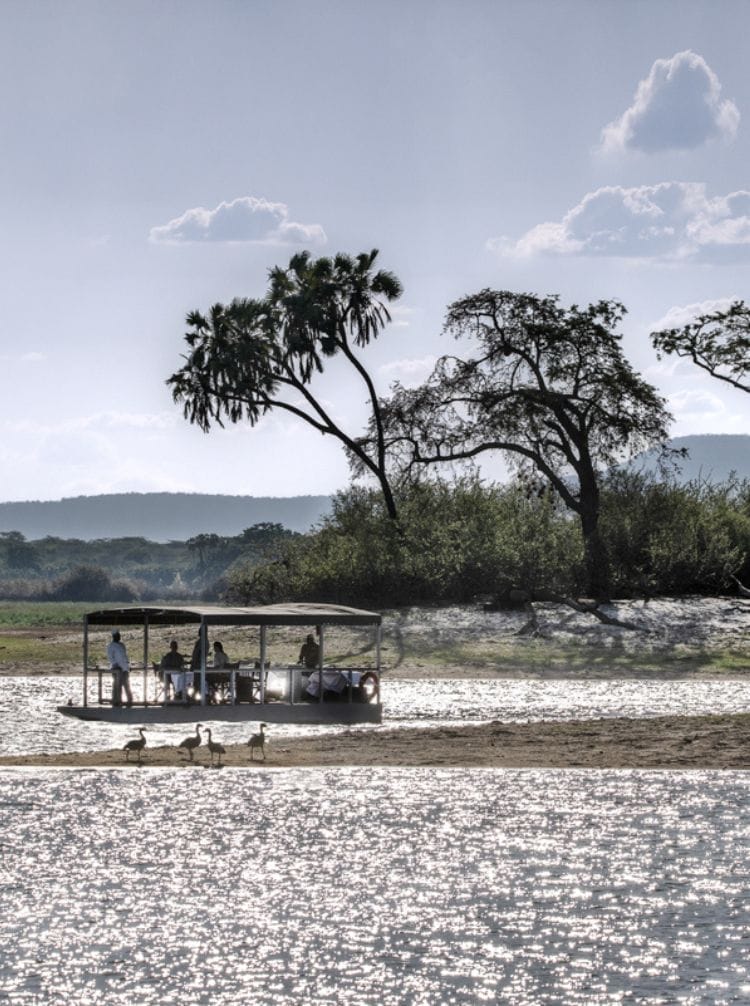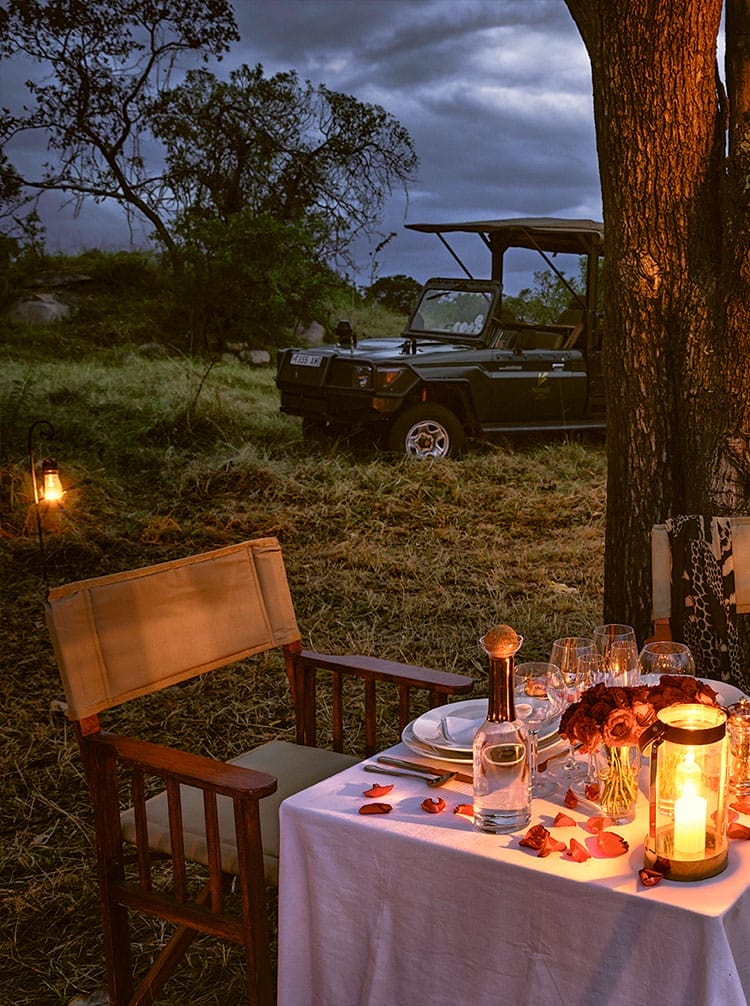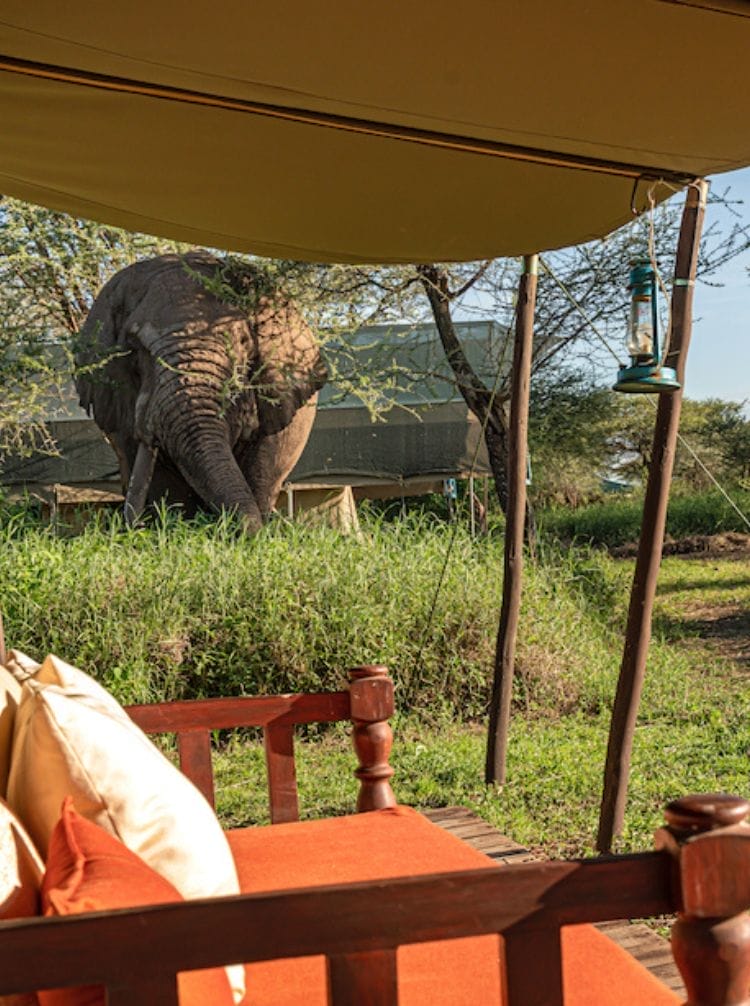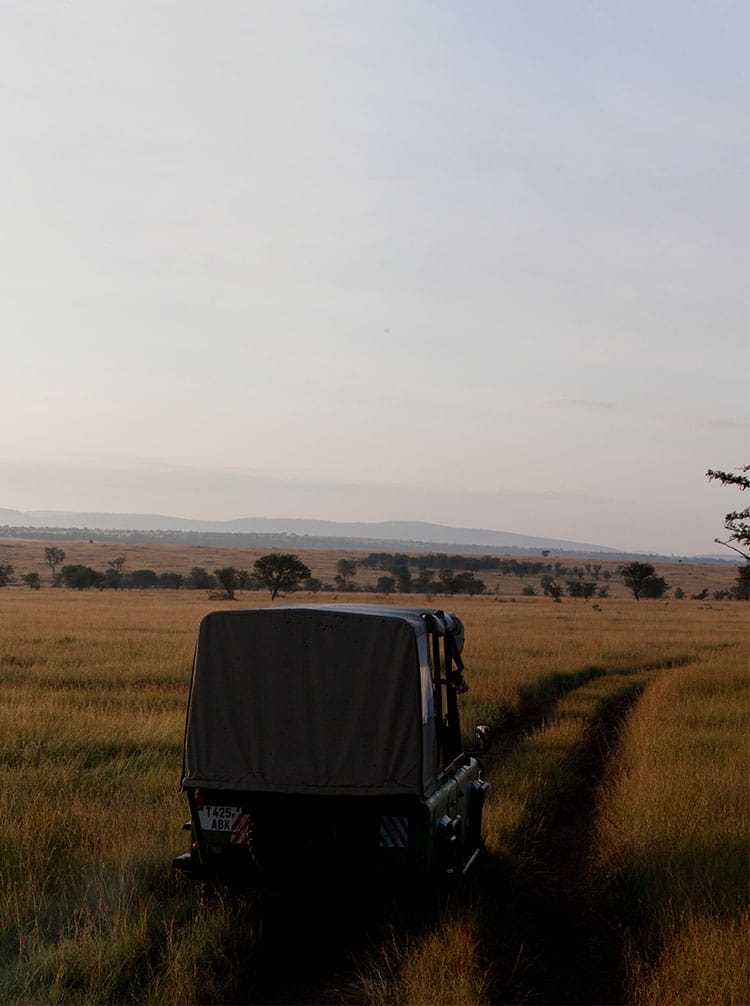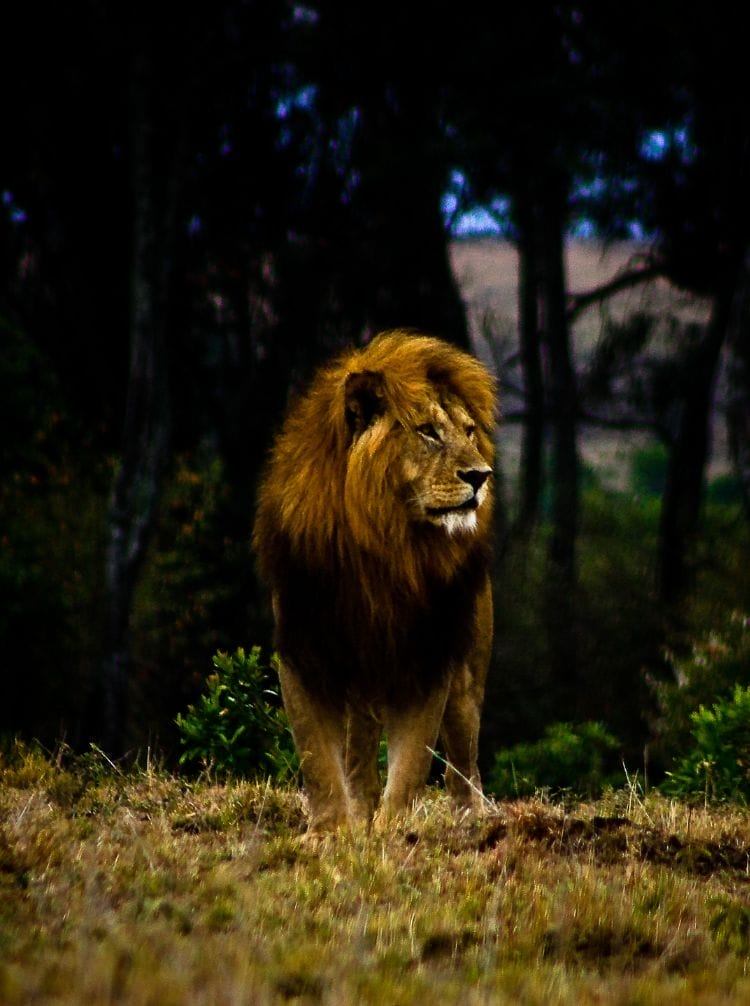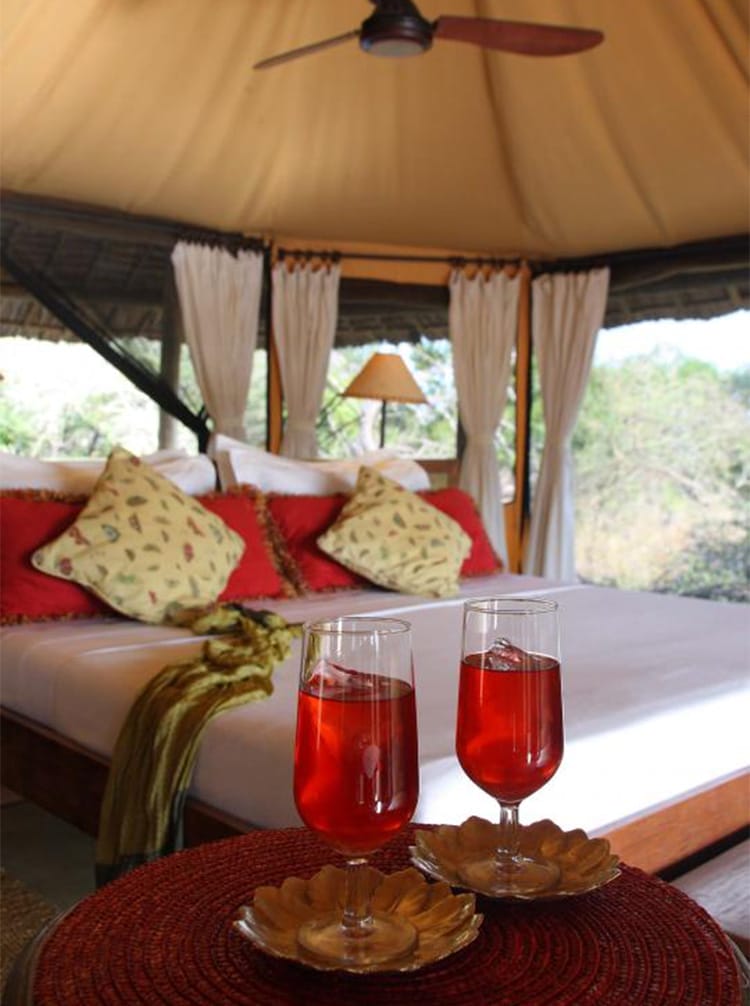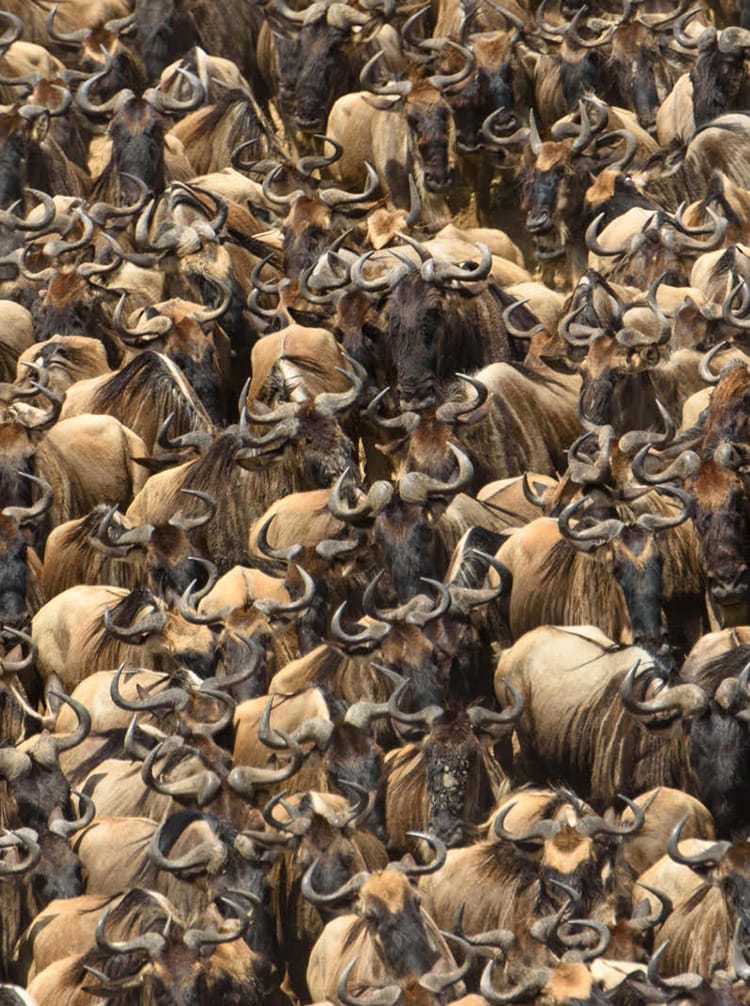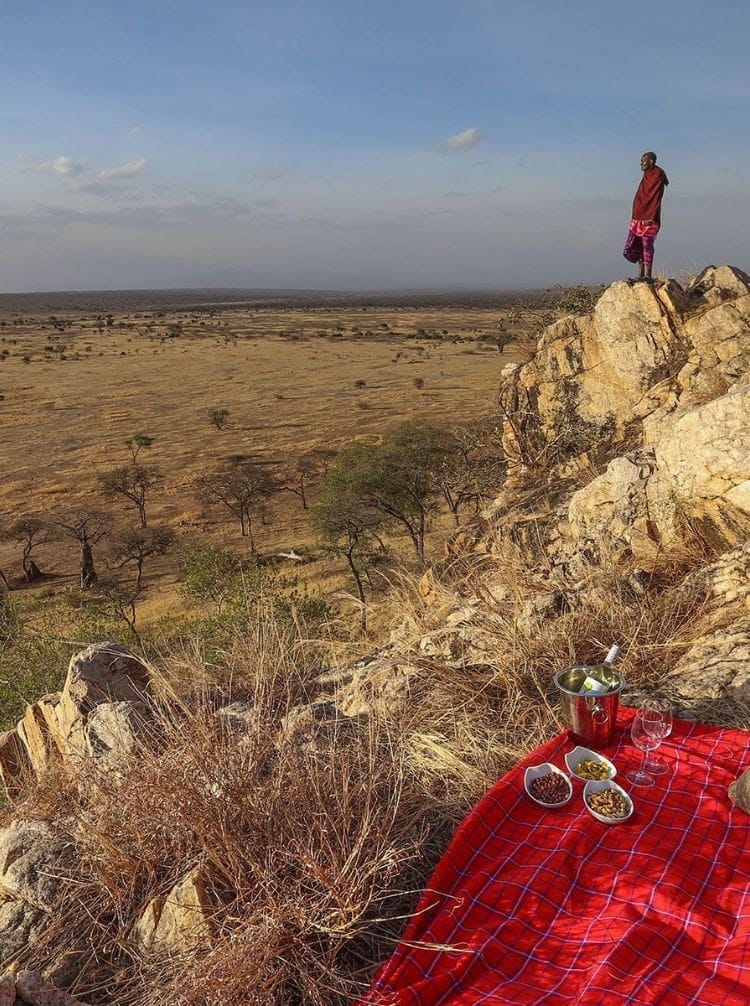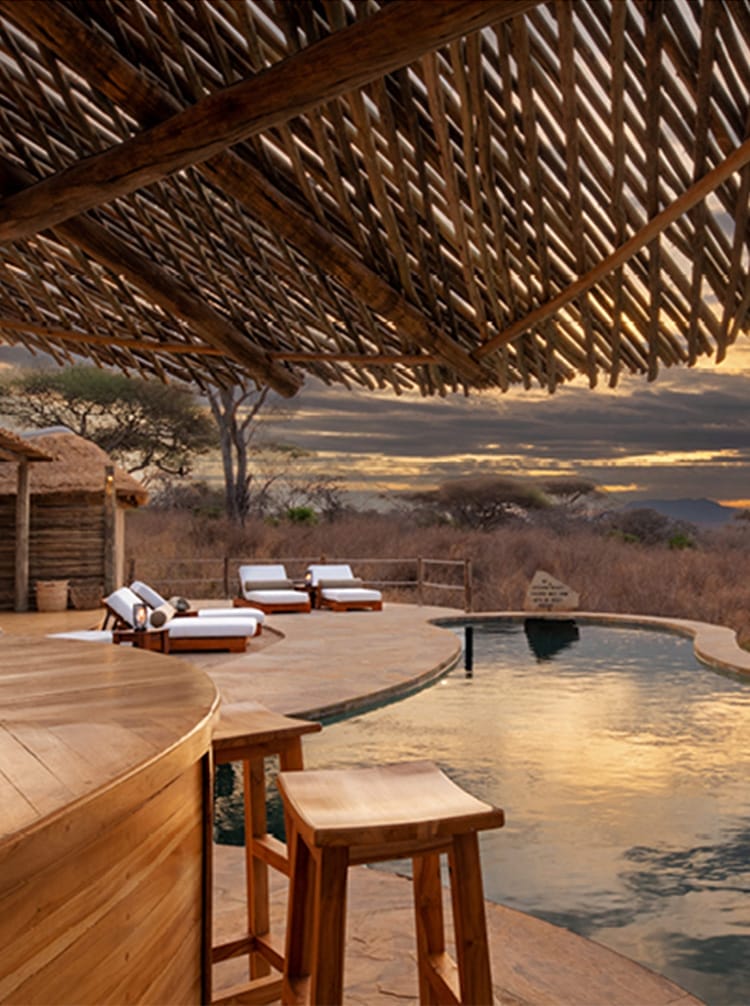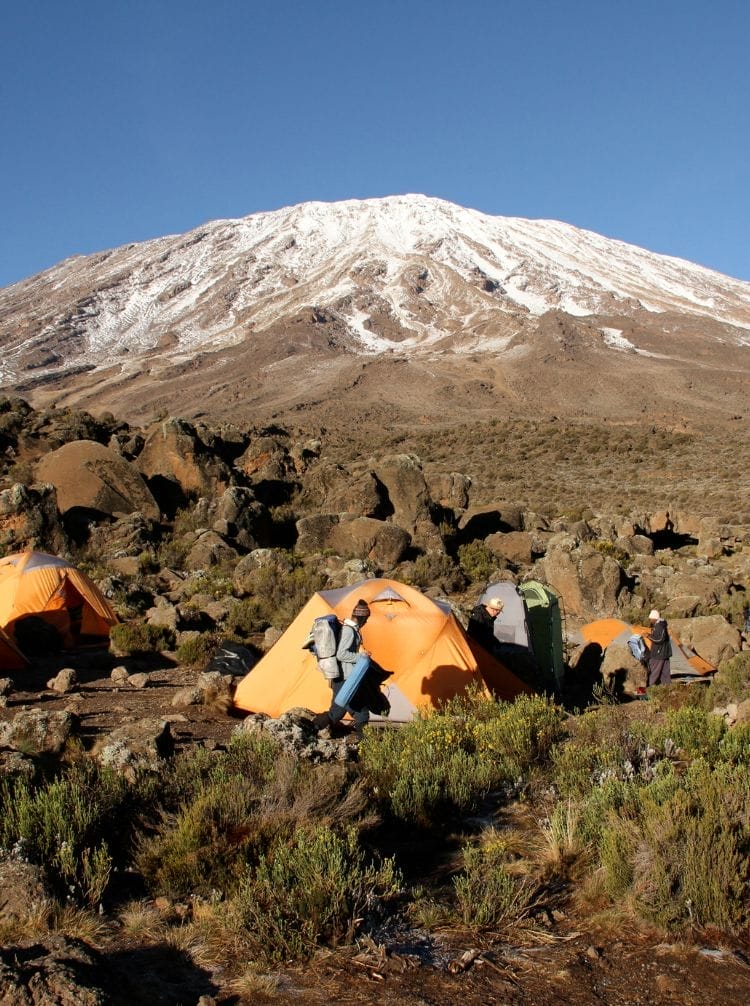Tanzania Travel Information
Everything you need to plan your safari to Tanzania — from the best time to visit and visa requirements to health advice, packing tips, money, and connectivity. Whether you’re exploring the Serengeti, Ngorongoro Crater, or Zanzibar’s beaches, this practical guide will help you prepare for a seamless and memorable journey.
Tanzania's month-by-month visit guide
Visiting in January
The Great Migration herds have reached the southern Serengeti, spreading out for calving amid warm, dry weather—a prime time for safaris. Mount Kilimanjaro climbs are feasible, though the peak may be crowded. Coastal Tanzania, including Zanzibar, offers an idyllic tropical beach escape. Inland, Tarangire, Serengeti, and Ngorongoro Crater showcase the Great Migration. The weather is hot and sunny, ideal for safaris and witnessing wildebeest calving. Climbing Kilimanjaro remains favorable. Coastal and inland regions together present diverse opportunities for an unforgettable Tanzanian experience.

Visiting in February
The calving season kicks off in the Serengeti and Ngorongoro Crater, with thousands of wildebeest giving birth, drawing in active predators. Approximately 500,000 wildebeest calves are born in this period. The weather is hot and sunny, perfect for safaris, with a chance to witness calving in the southern Serengeti. Climbing conditions on Kilimanjaro are favorable. The February Great Migration in the Serengeti sees most wildebeest calving in a 2-3 week window, offering abundant predator sightings. The landscape is lush after short rains, making it an opportune time for climbing Kilimanjaro, though it may be crowded.

Visiting in March
In March, the long rains season commences, transforming the landscape into lush terrain in the Ngorongoro Highlands with short, sharp afternoon rainfall. This period is ideal for Mount Kilimanjaro expeditions, although wildlife viewing may become challenging due to the rainy season. Meanwhile, in Serengeti, the Great Migration begins its northward movement, providing a less crowded experience.

Visiting in April
Tanzania experiences its primary rainy season peak in April with intense, continuous precipitation. Afternoon thundershowers and nocturnal storms are frequent, particularly in western and southern parks with high humidity. Despite wildlife dispersal due to rainfall, the Southwest Serengeti hosts the wildebeest rut, a notable highlight. April poses challenges for travel with muddy roads, affecting safari accessibility. However, this off-peak period offers discounted prices and fewer crowds, making it an economical time for those seeking value and tranquility in Tanzania tours and accommodations.

Visiting in May
In May, a mix of heavy rain and the conclusion of the rainy season affects inland areas. While early May remains wet, the latter part experiences drier conditions as the dry season begins in June. The Great Migration shifts from the southern Serengeti to the western corridor. Wildlife viewing is challenging, but the northern region offers good safari opportunities. Kilimanjaro climb conditions improve. The wet season persists, fostering active wildlife. This period is ideal for birdwatching and photography, capturing vivid colors in the skies as the long rains season concludes.

Visiting in June
In June, Tanzania enters its dry season, heralding prime conditions for luxurious safaris. The conclusion of the rainy season transforms the savannah from green to yellow, amplifying wildlife sightings. This period is ideal for Kilimanjaro treks. Moreover, June marks the onset of the Great Migration, potentially witnessed at the Grumeti River with animals preparing for daring crossings. The game reserve roads also dry out, facilitating easier travel for unforgettable safari experiences, especially in the Serengeti where the Great Migration unfolds.

Visiting in July
July is the prime safari season in Tanzania, characterized by optimal weather and exceptional game drive opportunities. It’s an ideal period for combining Kenya and Tanzania safaris. The northern Serengeti hosts the Great Migration, as wildebeests prepare for Mara River crossings into Kenya. The month promises excellent weather, abundant sunshine, and minimal rainfall, enhancing wildlife viewing experiences. However, visitor traffic is high, particularly in core areas. Traveling in July offers superb weather, bustling game drives, and a front-row seat to the spectacular Migration, albeit with increased tourist activity.

Visiting in August
Tarangire offers excellent game viewing amidst the stunning backdrop of iconic baobab trees, providing a less crowded alternative to the Serengeti. August is a bustling period in Tanzania’s northern safari circuit and Zanzibar, featuring vibrant wildlife and the Great Migration crossing the Mara River. Despite high visitor traffic, it’s an optimal safari season with exceptional wildlife viewing. Mount Kilimanjaro is climbable, though crowded. Tarangire becomes a haven for elephant sightings, and Tanzania’s lake regions initiate the fishing season in September.

Visiting in September
In September, tourist crowds dwindle, making it an excellent time to visit Tanzania. Lower humidity and decreased mosquito activity enhance the experience. Mount Kilimanjaro conditions are optimal for hikers, while Tarangire National Park provides exceptional elephant sightings. Tanzania’s great lake regions usher in the fishing season. The Serengeti hosts the ongoing Migration, with the chance to witness thrilling river crossings. Climbing Kilimanjaro is favorable, though crowded. Tarangire remains a prime location for elephant viewing. Overall, September promises superb weather and wildlife sightings around permanent water sources.

Visiting in October
October in Mahale Mountains National Park offers prime chimpanzee encounters amid the onset of the first rains and thundercloud development. Lake Tanganyika reaches its warmest, perfect for aquatic pursuits. Arusha National Park becomes ideal for Mount Meru climbs, benefiting from excellent dry season weather. The month promises outstanding wildlife viewing around water sources. Kilimanjaro conditions are favorable, with lower visitor traffic. The end of the dry season in other areas provides optimal wildlife viewing, as short grass and scarce water concentrate animals. Thunderstorm clouds signal the imminent arrival of the rainy season.

Visiting in November
November is an underrated month for a Tanzanian safari, featuring periodic thundershowers in the afternoon. While weather can be unpredictable with the start of short rains, the northern parks offer excellent year-round game viewing. It’s an ideal time for off-the-beaten-track exploration. Kilimanjaro conditions may be challenging, but low visitor traffic is an advantage. The short rains season begins in November, marked by afternoon thunderstorms, creating a low season with favorable rates. The Serengeti sees the return of massive herds, following rains that spur new grass growth in the southern plains.

Visiting in December
In December, Tanzania experiences the ‘short rains,’ with the month’s initial period being tranquil before the festive season. Ideal for birdwatching, migratory birds populate Nyerere and Tarangire National Parks. The Great Migration returns to the southern Serengeti, perfect for witnessing the preparations for calving. Weather improves, though unpredictability persists. Wildlife viewing is optimal with the migration in the southern Serengeti. Kilimanjaro conditions vary. The first half of December is serene, contrasting the lively Christmas and New Year period. Tarangire remains a haven for bird enthusiasts, and the short rains conclude by month-end.

Getting There
The main international airport of Tanzania is:
Julius Nyerere International Airport in Dar es Salaam – (DAR)
Kilimanjaro Airport (JRO) is also frequently used, especially when arriving from neighbouring African countries.
You can check your best flight route here
Security & General Travel Safety
Our head office is based in Nairobi and we work with reputable safari companies who are located on the ground in Tanzania These companies are the eyes and ears on the ground and can inform our head office in Nairobi of any security situation as it may happen, ensuring that we can act and respond swiftly.
Other general travel safety advice:
- In the cities and main tourist areas, be on the alert for handbag snatchers and pick pockets.
- Do not travel with any precious jewellery items.
- Make copies of your travel documents and keep these in a safe place – separate from the original documents.
- Split out cash into separate bundles of small amounts and keep separately.
- Ensure that luggage can be locked.
- Always wear sear belts whilst traveling in vehicles and ensure doors are locked.
Currency
Tanzania Shilling is the currency used in Tanzania but US$ are also widely used and are easier to travel with. However please note that travelers are required to declare international currency valuing more than $10,000 on both entrance and exit from Tanzania.
Ensure to travel with lower denomination notes, as change given from high tender notes may not be easily available.
When tipping, do so in US$.
Many camps/lodges will be pre-paid before your safari, with tips needing to be settled upon departure. If you do need to settle something to a bill, please be aware that some camps/lodges in remote areas may not accept credit/bank cards, so it is advised to have enough US$ in cash to cover any additional costs.
Always inform your bank that you are travelling outside of the country as they might block any attempt to withdraw cash or use card machines if they have not been informed beforehand.
Non-residents (except Kenyans and Ugandans) may not import or export Tanzanian Shillings (TZS)
Tips & Gratuities
Tipping is entirely at your discretion and although it is not a requirement it is customary to tip for good service. There is not a set amount to tip, so please take the following information as a guideline:
Guides – US$10-$20 cash per person /per day
Camp Staff Team – US$10-$20 per person / per day
Camp Host – US$10-$20 per person / per day
Tips should be given in US$ cash and it is usual to tip at the end of your stay.
Some camps/lodges will have a tip box for the camp staff team.
Health Information
Malaria:
It is advised that visitors take malaria precautions when travelling to Tanzania. It is recommended that you contact your Doctor or Travel Health Clinic at least 6-8 weeks prior to travel.
You can reduce the risk of malaria by using prophylactics (which should be started before arriving in Tanzania and under your doctor’s guidance) and by following these simple procedures:
- Wear long sleeves and long trousers to avoid bites from mosquitos, insects and ticks.
- Apply mosquito repellents on a regular basis to exposed skin.
- Where possible sleep under a mosquito net.
- Burn an insect/mosquito repellent candle or coil.
All travellers should be aware of the signs and symptoms of malaria and should be advised to seek immediate medical attention if these occur either whilst abroad or up to a year after their return. Speak to your Doctor or Travel Health Clinic for more information.
Vaccinations:
Yellow fever required if traveling from a yellow fever endemic country.
The recommendations regarding vaccinations & anti-malaria tablets need to be discussed with a professional, therefore it is advised that you contact your Doctor/medical centre/ travel health clinic for up-to-date details, this should ideally be done at least 8 weeks before you travel.
Drinking Water & De-Hydration
Do not drink water straight from the tap, always drink from bottled water.
Also avoid ice as this may be used from tap water,
Brush teeth with bottled drinking water.
De-Hydration
Always take a bottle of drinking water in your day bag on any activity or excursions – even if it’s a short one – and take regular, small drinks of water.
Wear a hat and sunscreen at all times and cover up/take shade from the heat of the sun, especially during the hottest times of the day.
Bites & Stings
Bugs and small creatures are all a part of being in the wilds of Africa. It is of course important to take precautions against any opportunity for bites or stings, so being aware is important.
When walking in the bush always wear long trousers and enclosed shoes or walking boots , with thick socks covering the ankles for protection. When walking in long grass, check your legs and clothes for grass ticks – especially in the rainy season, even when you are wearing long trousers.
Check & shake out shoes and walking boots before putting them on.
Always look first to see where you are sitting, when picking something up or when putting your hand/foot into something, like a bag or shoe – check first!
If you think you may have been bitten or stung by something, always inform the Camp Manager & Safari Guide as soon as possible.
Internet, Electricity and Plug Standards
Internet availability and wifi can be sporadic whilst on safari in Tanzania. It is best to think of this trip as an opportunity to take a break from the world of tech and reconnect to nature. If necessary, we can check each camp individually if there is a wish to know if it has an internet connection.
Tanzania operates on a 230V supply voltage and 50Hz. Solar power is also common in safari locations.
Tanzania uses plug types D and G.
Climate
Tanzania has a long rainy season which happens from March – May. Some locations are not so easily accessed during these months and safari camps can be seasonally closed.
The green season in June is usually when the rains have finished but the landscape is still lush and green.
July – October are the dryer months, when safari viewing can be at it’s best but the temperatures are hotter before the rains begin again. This is peak safari season and it is advised to book well in advance.
Nov & December brings the shorter rainy season, when afternoon downpours are frequent but tend only to be for a couple of hours.
January – February are the hot and dry months.
Visa & Passport Requirements For Entry
PASSPORT
- Passport valid for a least 6 months from your date of entry.
- Return ticket to your country (or enough money to buy one).
- Sufficient funds to cover your stay in Tanzania.
- Enough blank pages (a min of 3) in your passport to fit the required entry visa.
VISA:
Visitors who require a Visa can apply for one on arrival into Tanzania, but this can be a lengthy process. We advise our clients to apply online for a visa in advance so that they have this before arrival. To check the latest Visa requirements and to apply click here
Clothing Suggestions
Pack lightly for your safari to include:
- Comfortable, loose fitting cotton clothing in muted and natural tones is recommended.
- Long sleeves and long trousers, shorts and t-shorts with enclosed footwear.
- Jacket or fleece for early mornings and evenings, when it can get chilly.
- Hat to keep the sun off and protect from sunburn.
- Small day pack to hold water bottle, binoculars, notebook and pen, sunglasses, face/hand wipes etc
- Please note that camouflage-patterned clothes are illegal, so avoid any item like this.
See here for our full clothing packing guide
Travel Insurance
All travellers must have adequate and comprehensive travel health insurance. Make sure your travel insurance covers all the activities you plan on doing in Tanzania and covers your full stay in the country and travel to/from.
Quick Facts
Time Zone
GMT + 3
Currency
Tanzania Shillings
International Airports
Dar Es Salaam / Kilimanjaro
Best Time
June-October
Malaria
Malaria zone
Language
English & Kiswahili

Everything you need to plan your safari to Tanzania — from the best time to visit and visa requirements to health advice, packing tips, money, and connectivity. Whether you’re exploring the Serengeti, Ngorongoro Crater, or Zanzibar’s beaches, this practical guide will help you prepare for a seamless and memorable journey.
Quick Facts
Time Zone
GMT + 3
Currency
Tanzania Shillings / US$ widely accepted
International Airport
Dar Es Salaam / Kilimanjaro
Best Time
June-October
Malaria
Malaria zone
Language
English & Kiswahili
Tanzania's month-by-month visit guide
Visiting in January
The Great Migration herds have reached the southern Serengeti, spreading out for calving amid warm, dry weather—a prime time for safaris. Mount Kilimanjaro climbs are feasible, though the peak may be crowded. Coastal Tanzania, including Zanzibar, offers an idyllic tropical beach escape. Inland, Tarangire, Serengeti, and Ngorongoro Crater showcase the Great Migration. The weather is hot and sunny, ideal for safaris and witnessing wildebeest calving. Climbing Kilimanjaro remains favorable. Coastal and inland regions together present diverse opportunities for an unforgettable Tanzanian experience.

Visiting in February
The calving season kicks off in the Serengeti and Ngorongoro Crater, with thousands of wildebeest giving birth, drawing in active predators. Approximately 500,000 wildebeest calves are born in this period. The weather is hot and sunny, perfect for safaris, with a chance to witness calving in the southern Serengeti. Climbing conditions on Kilimanjaro are favorable. The February Great Migration in the Serengeti sees most wildebeest calving in a 2-3 week window, offering abundant predator sightings. The landscape is lush after short rains, making it an opportune time for climbing Kilimanjaro, though it may be crowded.

Visiting in March
In March, the long rains season commences, transforming the landscape into lush terrain in the Ngorongoro Highlands with short, sharp afternoon rainfall. This period is ideal for Mount Kilimanjaro expeditions, although wildlife viewing may become challenging due to the rainy season. Meanwhile, in Serengeti, the Great Migration begins its northward movement, providing a less crowded experience.

Visiting in April
Tanzania experiences its primary rainy season peak in April with intense, continuous precipitation. Afternoon thundershowers and nocturnal storms are frequent, particularly in western and southern parks with high humidity. Despite wildlife dispersal due to rainfall, the Southwest Serengeti hosts the wildebeest rut, a notable highlight. April poses challenges for travel with muddy roads, affecting safari accessibility. However, this off-peak period offers discounted prices and fewer crowds, making it an economical time for those seeking value and tranquility in Tanzania tours and accommodations.

Visiting in May
In May, a mix of heavy rain and the conclusion of the rainy season affects inland areas. While early May remains wet, the latter part experiences drier conditions as the dry season begins in June. The Great Migration shifts from the southern Serengeti to the western corridor. Wildlife viewing is challenging, but the northern region offers good safari opportunities. Kilimanjaro climb conditions improve. The wet season persists, fostering active wildlife. This period is ideal for birdwatching and photography, capturing vivid colors in the skies as the long rains season concludes.

Visiting in June
In June, Tanzania enters its dry season, heralding prime conditions for luxurious safaris. The conclusion of the rainy season transforms the savannah from green to yellow, amplifying wildlife sightings. This period is ideal for Kilimanjaro treks. Moreover, June marks the onset of the Great Migration, potentially witnessed at the Grumeti River with animals preparing for daring crossings. The game reserve roads also dry out, facilitating easier travel for unforgettable safari experiences, especially in the Serengeti where the Great Migration unfolds.

Visiting in July
July is the prime safari season in Tanzania, characterized by optimal weather and exceptional game drive opportunities. It’s an ideal period for combining Kenya and Tanzania safaris. The northern Serengeti hosts the Great Migration, as wildebeests prepare for Mara River crossings into Kenya. The month promises excellent weather, abundant sunshine, and minimal rainfall, enhancing wildlife viewing experiences. However, visitor traffic is high, particularly in core areas. Traveling in July offers superb weather, bustling game drives, and a front-row seat to the spectacular Migration, albeit with increased tourist activity.

Visiting in August
Tarangire offers excellent game viewing amidst the stunning backdrop of iconic baobab trees, providing a less crowded alternative to the Serengeti. August is a bustling period in Tanzania’s northern safari circuit and Zanzibar, featuring vibrant wildlife and the Great Migration crossing the Mara River. Despite high visitor traffic, it’s an optimal safari season with exceptional wildlife viewing. Mount Kilimanjaro is climbable, though crowded. Tarangire becomes a haven for elephant sightings, and Tanzania’s lake regions initiate the fishing season in September.

Visiting in September
In September, tourist crowds dwindle, making it an excellent time to visit Tanzania. Lower humidity and decreased mosquito activity enhance the experience. Mount Kilimanjaro conditions are optimal for hikers, while Tarangire National Park provides exceptional elephant sightings. Tanzania’s great lake regions usher in the fishing season. The Serengeti hosts the ongoing Migration, with the chance to witness thrilling river crossings. Climbing Kilimanjaro is favorable, though crowded. Tarangire remains a prime location for elephant viewing. Overall, September promises superb weather and wildlife sightings around permanent water sources.

Visiting in October
October in Mahale Mountains National Park offers prime chimpanzee encounters amid the onset of the first rains and thundercloud development. Lake Tanganyika reaches its warmest, perfect for aquatic pursuits. Arusha National Park becomes ideal for Mount Meru climbs, benefiting from excellent dry season weather. The month promises outstanding wildlife viewing around water sources. Kilimanjaro conditions are favorable, with lower visitor traffic. The end of the dry season in other areas provides optimal wildlife viewing, as short grass and scarce water concentrate animals. Thunderstorm clouds signal the imminent arrival of the rainy season.

Visiting in November
November is an underrated month for a Tanzanian safari, featuring periodic thundershowers in the afternoon. While weather can be unpredictable with the start of short rains, the northern parks offer excellent year-round game viewing. It’s an ideal time for off-the-beaten-track exploration. Kilimanjaro conditions may be challenging, but low visitor traffic is an advantage. The short rains season begins in November, marked by afternoon thunderstorms, creating a low season with favorable rates. The Serengeti sees the return of massive herds, following rains that spur new grass growth in the southern plains.

Visiting in December
In December, Tanzania experiences the ‘short rains,’ with the month’s initial period being tranquil before the festive season. Ideal for birdwatching, migratory birds populate Nyerere and Tarangire National Parks. The Great Migration returns to the southern Serengeti, perfect for witnessing the preparations for calving. Weather improves, though unpredictability persists. Wildlife viewing is optimal with the migration in the southern Serengeti. Kilimanjaro conditions vary. The first half of December is serene, contrasting the lively Christmas and New Year period. Tarangire remains a haven for bird enthusiasts, and the short rains conclude by month-end.

Quick Facts
- July - October is peak wildlife season & advanced booking is advised.
- Rainy & Green seasons offer great value for money
- January & Febuary tend to be the hotter dryer months.
Tanzania's month-by-month visit guide
Visiting in January
The Great Migration herds have reached the southern Serengeti, spreading out for calving amid warm, dry weather—a prime time for safaris. Mount Kilimanjaro climbs are feasible, though the peak may be crowded. Coastal Tanzania, including Zanzibar, offers an idyllic tropical beach escape. Inland, Tarangire, Serengeti, and Ngorongoro Crater showcase the Great Migration. The weather is hot and sunny, ideal for safaris and witnessing wildebeest calving. Climbing Kilimanjaro remains favorable. Coastal and inland regions together present diverse opportunities for an unforgettable Tanzanian experience.

Visiting in February
The calving season kicks off in the Serengeti and Ngorongoro Crater, with thousands of wildebeest giving birth, drawing in active predators. Approximately 500,000 wildebeest calves are born in this period. The weather is hot and sunny, perfect for safaris, with a chance to witness calving in the southern Serengeti. Climbing conditions on Kilimanjaro are favorable. The February Great Migration in the Serengeti sees most wildebeest calving in a 2-3 week window, offering abundant predator sightings. The landscape is lush after short rains, making it an opportune time for climbing Kilimanjaro, though it may be crowded.

Visiting in March
In March, the long rains season commences, transforming the landscape into lush terrain in the Ngorongoro Highlands with short, sharp afternoon rainfall. This period is ideal for Mount Kilimanjaro expeditions, although wildlife viewing may become challenging due to the rainy season. Meanwhile, in Serengeti, the Great Migration begins its northward movement, providing a less crowded experience.

Visiting in April
Tanzania experiences its primary rainy season peak in April with intense, continuous precipitation. Afternoon thundershowers and nocturnal storms are frequent, particularly in western and southern parks with high humidity. Despite wildlife dispersal due to rainfall, the Southwest Serengeti hosts the wildebeest rut, a notable highlight. April poses challenges for travel with muddy roads, affecting safari accessibility. However, this off-peak period offers discounted prices and fewer crowds, making it an economical time for those seeking value and tranquility in Tanzania tours and accommodations.

Visiting in May
In May, a mix of heavy rain and the conclusion of the rainy season affects inland areas. While early May remains wet, the latter part experiences drier conditions as the dry season begins in June. The Great Migration shifts from the southern Serengeti to the western corridor. Wildlife viewing is challenging, but the northern region offers good safari opportunities. Kilimanjaro climb conditions improve. The wet season persists, fostering active wildlife. This period is ideal for birdwatching and photography, capturing vivid colors in the skies as the long rains season concludes.

Visiting in June
In June, Tanzania enters its dry season, heralding prime conditions for luxurious safaris. The conclusion of the rainy season transforms the savannah from green to yellow, amplifying wildlife sightings. This period is ideal for Kilimanjaro treks. Moreover, June marks the onset of the Great Migration, potentially witnessed at the Grumeti River with animals preparing for daring crossings. The game reserve roads also dry out, facilitating easier travel for unforgettable safari experiences, especially in the Serengeti where the Great Migration unfolds.

Visiting in July
July is the prime safari season in Tanzania, characterized by optimal weather and exceptional game drive opportunities. It’s an ideal period for combining Kenya and Tanzania safaris. The northern Serengeti hosts the Great Migration, as wildebeests prepare for Mara River crossings into Kenya. The month promises excellent weather, abundant sunshine, and minimal rainfall, enhancing wildlife viewing experiences. However, visitor traffic is high, particularly in core areas. Traveling in July offers superb weather, bustling game drives, and a front-row seat to the spectacular Migration, albeit with increased tourist activity.

Visiting in August
August is a bustling period in Tanzania’s northern safari circuit and Zanzibar, featuring vibrant wildlife and the Great Migration crossing the Mara River. Despite high visitor traffic, it’s an optimal safari season with exceptional wildlife viewing. Mount Kilimanjaro is climbable, though crowded. Tarangire offers excellent game viewing amidst the stunning backdrop of iconic baobab trees, providing a less crowded alternative to the Serengeti. Tarangire becomes a haven for elephant sightings, and Tanzania’s lake regions initiate the fishing season in September.

Visiting in September
In September, tourist crowds dwindle, making it an excellent time to visit Tanzania. Lower humidity and decreased mosquito activity enhance the experience. Mount Kilimanjaro conditions are optimal for hikers, while Tarangire National Park provides exceptional elephant sightings. Tanzania’s great lake regions usher in the fishing season. The Serengeti hosts the ongoing Migration, with the chance to witness thrilling river crossings. Climbing Kilimanjaro is favorable, though crowded. Tarangire remains a prime location for elephant viewing. Overall, September promises superb weather and wildlife sightings around permanent water sources.

Visiting in October
October in Mahale Mountains National Park offers prime chimpanzee encounters amid the onset of the first rains and thundercloud development. Lake Tanganyika reaches its warmest, perfect for aquatic pursuits. Arusha National Park becomes ideal for Mount Meru climbs, benefiting from excellent dry season weather. The month promises outstanding wildlife viewing around water sources. Kilimanjaro conditions are favorable, with lower visitor traffic. The end of the dry season in other areas provides optimal wildlife viewing, as short grass and scarce water concentrate animals. Thunderstorm clouds signal the imminent arrival of the rainy season.

Visiting in November
November is an underrated month for a Tanzanian safari, featuring periodic thundershowers in the afternoon. While weather can be unpredictable with the start of short rains, the northern parks offer excellent year-round game viewing. It’s an ideal time for off-the-beaten-track exploration. Kilimanjaro conditions may be challenging, but low visitor traffic is an advantage. The short rains season begins in November, marked by afternoon thunderstorms, creating a low season with favorable rates. The Serengeti sees the return of massive herds, following rains that spur new grass growth in the southern plains.

Visiting in December
In December, Tanzania experiences the ‘short rains,’ with the month’s initial period being tranquil before the festive season. Ideal for birdwatching, migratory birds populate Nyerere and Tarangire National Parks. The Great Migration returns to the southern Serengeti, perfect for witnessing the preparations for calving. Weather improves, though unpredictability persists. Wildlife viewing is optimal with the migration in the southern Serengeti. Kilimanjaro conditions vary. The first half of December is serene, contrasting the lively Christmas and New Year period. Tarangire remains a haven for bird enthusiasts, and the short rains conclude by month-end.

The main international airport of Tanzania is:
Julius Nyerere International Airport in Dar es Salaam – (DAR)
Kilimanjaro Airport (JRO) is also frequently used, especially when arriving from neighbouring African countries.
You can check your best flight route here
AIRPORT ARRIVAL: Upon arrival you will need to clear Passport Control and Customs. For those arriving by air once you have gone through Passport Control and collected your luggage from the carousel, you will see a group of tour representatives and taxi drivers ready to meet travellers. Look for our representative holding a signboard with your surname on it. In case you have any difficulty seeing our rep then call our 24 hour emergency contact numbers - +254-723-979370, +254-736-888500 or +254-733-718904.
For those arriving by road through the Isebania or Namanga borders then your transfer drivers on both sides of the Border will provide advice and directions to see you safely and efficiently through the immigration process.
Quick Facts
- Main International Airports: Dar Es Salaam / Kilimanjaro
- On arrival clear passport control and customs. Look out for our Representative
- 24 hours Emergency Contact Numbers - +254-723-979-370 / +254-736-888-500 / +254-733-718-904
While Tanzania offers a Visa on Arrival, travellers are strongly advised to apply online via the official portal, as visas are no longer issued at embassies and applications made through other sites are not valid.
Tourist visitors should apply for an Ordinary Visa.
U.S. passport holders visiting for holiday or tourism must apply for a Multiple Entry Visa (USD 100).
Processing time: typically 4–6 weeks.
Ordinary Visa validity: up to 90 days, single entry, USD 50.
Passports must be valid for at least 6 months with one unused visa page before applying.
Quick Facts
- Apply online for Visa
- U.S passport holders require Multiple Entry Vis
- Check passport validity
US$ is not accepted or any form of foreign currency.
Tipping is entirely at your discretion and although it is not a requirement it is customary to tip for good service.
As a guideline the following are the standard tipping rates, with Tips in TZS (not US$) graciously accepted:
Bar & Restaurant Staff - 10% of bill.
Driver / guide on safari - TZS 11,500-23,000 (eqv US$5-$10) per guest per day.
Camp/Lodge/Hotel staff - TZS 11,500-23,000 (eqv US$5-$10) per guest per day into the staff tip box.
Quick Facts
- The Tanzanian Shiling is the offical currency of Tanzania
- US$ or any form of foreign currency is not accepted.
- Tipping for good service is customary.
Anti-malarial medication is considered essential and it is also advisable to try and avoid mosquito bites by using repellent and by covering exposed areas of skin, particularly in the evenings when mosquitos tend to be more active.
You can reduce the risk of malaria by using prophylactics (which should be started before arriving in Tanzania and under your doctor’s guidance) and by following these simple procedures:
- Wear long sleeves and long trousers to avoid bites from mosquitos, insects and ticks.
- Apply mosquito repellents on a regular basis to exposed skin.
- Where possible sleep under a mosquito net.
- Burn an insect/mosquito repellent candle or coil.
All travellers should be aware of the signs and symptoms of malaria and should be advised to seek immediate medical attention if these occur either whilst abroad or up to a year after their return.
Speak to your Doctor or Travel Health Clinic for more information.
Vaccinations:
The recommendations regarding vaccinations & anti-malaria tablets need to be discussed with a professional, therefore it is advised that you contact your Doctor/medical centre/ travel health clinic for up-to-date details, this should ideally be done at least 8 weeks before you travel.
Quick Facts
- The recommendations regarding vaccinations & anti-malaria tablets need to be discussed with a professional, therefore it is advised that you contact your Doctor/medical centre/ travel health clinic for up-to-date details, this should ideally be done at least 8 weeks before you travel..
Zanzibar Mandatory Inbound Travel Insurance
It is mandatory for all foreign visitors to Zanzibar to possess a valid Inbound Travel Insurance which will provide coverage for the duration of their stay (up to 92 days).
The three-month scheme is expected to cost each visitor USD 44 and must be acquired ONLY from the Zanzibar Insurance Corporation through a QR Code that will be provided before embarking on their journey to Zanzibar. Failure to comply with this mandatory requirement may result in entry denial at immigration checkpoints.
Quick Facts
- Comprehensive travel insurance is essential.
- Cover required for medical treatment and repatriation.
- Zanzibar mandatory Inbound Travel Insurance required.
- In the cities and main tourist areas, be on the alert for handbag snatchers and pick pockets.
- Do not travel with any precious jewellery items.
- Make copies of your travel documents and keep these in a safe place – separate from the original documents.
- Split out cash into separate bundles of small amounts and keep separately.
- Ensure that luggage can be locked.
- Always wear sear belts whilst traveling in vehicles and ensure doors are locked.
- Avoid travelling after dark in isolated places particularly empty beaches.
Quick Facts
- Tanzania is generally safe for tourists, but normal travel precautions are advised.
- Keep valuables secure: avoid wearing precious jewellery, lock luggage, and stay alert for pickpockets.
- Travel smart: carry copies of important documents, split your cash, wear seat belts, and avoid isolated areas after dark.
Tanzania operates on a 230V supply voltage and 50Hz frequency.
The country uses plug types D and G, with type D (three round pins) being the most common. You’ll also find type G (British three-pin) sockets in some hotels and newer buildings.
Travel tip:
To stay connected, bring a universal travel adapter that supports type D and G plugs and can handle 230V. Many adapters also include USB ports for convenient charging of phones and cameras.
Quick Facts
- Internet & Wifi can be sporadic in the more remote regions of Tanzania.
- Bring a universal travel adapotor that suports type D & G plugs and can handle 230V .
Pack lightly for your safari to include:
- Comfortable, loose fitting cotton clothing in muted and natural tones is recommended.
- Long sleeves and long trousers, shorts and t-shorts with enclosed footwear.
- Jacket or fleece for early mornings and evenings, when it can get chilly.
- Hat to keep the sun off and protect from sunburn.
- Small day pack to hold water bottle, binoculars, notebook and pen, sunglasses, face/hand wipes.
Please note that camouflage-patterned clothes are illegal, so avoid any item like this.
See here for our full clothing packing guide
Do not drink water straight from the tap, always drink from bottled water.
Also avoid ice as this may be used from tap water,
Brush teeth with bottled drinking water.
De-Hydration
Always take a bottle of drinking water in your day bag on any activity or excursions – even if it’s a short one – and take regular, small drinks of water.
Wear a hat and sunscreen at all times and cover up/take shade from the heat of the sun, especially during the hottest times of the day.
Bugs and small creatures are all a part of being in the wilds of Africa. It is of course important to take precautions against any opportunity for bites or stings, so being aware is important.
When walking in the bush always wear long trousers and enclosed shoes or walking boots , with thick socks covering the ankles for protection. When walking in long grass, check your legs and clothes for grass ticks – especially in the rainy season, even when you are wearing long trousers.
Check & shake out shoes and walking boots before putting them on.
Always look first to see where you are sitting, when picking something up or when putting your hand/foot into something, like a bag or shoe – check first!
If you think you may have been bitten or stung by something, always inform the Camp Manager & Safari Guide as soon as possible.
Travel Checklist
- Check passport validity
- Check visa requirements
- Check health & malaria requirements with a health professional
- Arrange comprehensive travel insurance
Getting There
The main international airport of Tanzania is:
Julius Nyerere International Airport in Dar es Salaam – (DAR)
Kilimanjaro Airport (JRO) is also frequently used, especially when arriving from neighbouring African countries.
You can check your best flight route here
Security & General Travel Safety
Our head office is based in Nairobi and we work with reputable safari companies who are located on the ground in Tanzania These companies are the eyes and ears on the ground and can inform our head office in Nairobi of any security situation as it may happen, ensuring that we can act and respond swiftly.
Other general travel safety advice:
- In the cities and main tourist areas, be on the alert for handbag snatchers and pick pockets.
- Do not travel with any precious jewellery items.
- Make copies of your travel documents and keep these in a safe place – separate from the original documents.
- Split out cash into separate bundles of small amounts and keep separately.
- Ensure that luggage can be locked.
- Always wear sear belts whilst traveling in vehicles and ensure doors are locked.
Currency
Tanzania Shilling is the currency used in Tanzania but US$ are also widely used and are easier to travel with. However please note that travelers are required to declare international currency valuing more than $10,000 on both entrance and exit from Tanzania.
Ensure to travel with lower denomination notes, as change given from high tender notes may not be easily available.
When tipping, do so in US$.
Many camps/lodges will be pre-paid before your safari, with tips needing to be settled upon departure. If you do need to settle something to a bill, please be aware that some camps/lodges in remote areas may not accept credit/bank cards, so it is advised to have enough US$ in cash to cover any additional costs.
Always inform your bank that you are travelling outside of the country as they might block any attempt to withdraw cash or use card machines if they have not been informed beforehand.
Non-residents (except Kenyans and Ugandans) may not import or export Tanzanian Shillings (TZS)
Tips & Gratuities
Tipping is entirely at your discretion and although it is not a requirement it is customary to tip for good service. There is not a set amount to tip, so please take the following information as a guideline:
Guides – US$10-$20 cash per person /per day
Camp Staff Team – US$10-$20 per person / per day
Camp Host – US$10-$20 per person / per day
Tips should be given in US$ cash and it is usual to tip at the end of your stay.
Some camps/lodges will have a tip box for the camp staff team.
Health Information
Malaria:
It is advised that visitors take malaria precautions when travelling to Tanzania. It is recommended that you contact your Doctor or Travel Health Clinic at least 6-8 weeks prior to travel.
You can reduce the risk of malaria by using prophylactics (which should be started before arriving in Tanzania and under your doctor’s guidance) and by following these simple procedures:
- Wear long sleeves and long trousers to avoid bites from mosquitos, insects and ticks.
- Apply mosquito repellents on a regular basis to exposed skin.
- Where possible sleep under a mosquito net.
- Burn an insect/mosquito repellent candle or coil.
All travellers should be aware of the signs and symptoms of malaria and should be advised to seek immediate medical attention if these occur either whilst abroad or up to a year after their return. Speak to your Doctor or Travel Health Clinic for more information.
Vaccinations:
Yellow fever required if traveling from a yellow fever endemic country.
The recommendations regarding vaccinations & anti-malaria tablets need to be discussed with a professional, therefore it is advised that you contact your Doctor/medical centre/ travel health clinic for up-to-date details, this should ideally be done at least 8 weeks before you travel.
Drinking Water & De-Hydration
Do not drink water straight from the tap, always drink from bottled water.
Also avoid ice as this may be used from tap water,
Brush teeth with bottled drinking water.
De-Hydration
Always take a bottle of drinking water in your day bag on any activity or excursions – even if it’s a short one – and take regular, small drinks of water.
Wear a hat and sunscreen at all times and cover up/take shade from the heat of the sun, especially during the hottest times of the day.
Bites & Stings
Bugs and small creatures are all a part of being in the wilds of Africa. It is of course important to take precautions against any opportunity for bites or stings, so being aware is important.
When walking in the bush always wear long trousers and enclosed shoes or walking boots , with thick socks covering the ankles for protection. When walking in long grass, check your legs and clothes for grass ticks – especially in the rainy season, even when you are wearing long trousers.
Check & shake out shoes and walking boots before putting them on.
Always look first to see where you are sitting, when picking something up or when putting your hand/foot into something, like a bag or shoe – check first!
If you think you may have been bitten or stung by something, always inform the Camp Manager & Safari Guide as soon as possible.
Internet, Electricity and Plug Standards
Internet availability and wifi can be sporadic whilst on safari in Tanzania. It is best to think of this trip as an opportunity to take a break from the world of tech and reconnect to nature. If necessary, we can check each camp individually if there is a wish to know if it has an internet connection.
Tanzania operates on a 230V supply voltage and 50Hz. Solar power is also common in safari locations.
Tanzania uses plug types D and G.
Climate
Tanzania has a long rainy season which happens from March – May. Some locations are not so easily accessed during these months and safari camps can be seasonally closed.
The green season in June is usually when the rains have finished but the landscape is still lush and green.
July – October are the dryer months, when safari viewing can be at it’s best but the temperatures are hotter before the rains begin again. This is peak safari season and it is advised to book well in advance.
Nov & December brings the shorter rainy season, when afternoon downpours are frequent but tend only to be for a couple of hours.
January – February are the hot and dry months.
Visa & Passport Requirements For Entry
PASSPORT
- Passport valid for a least 6 months from your date of entry.
- Return ticket to your country (or enough money to buy one).
- Sufficient funds to cover your stay in Tanzania.
- Enough blank pages (a min of 3) in your passport to fit the required entry visa.
VISA:
Visitors who require a Visa can apply for one on arrival into Tanzania, but this can be a lengthy process. We advise our clients to apply online for a visa in advance so that they have this before arrival. To check the latest Visa requirements and to apply click here
Clothing Suggestions
Pack lightly for your safari to include:
- Comfortable, loose fitting cotton clothing in muted and natural tones is recommended.
- Long sleeves and long trousers, shorts and t-shorts with enclosed footwear.
- Jacket or fleece for early mornings and evenings, when it can get chilly.
- Hat to keep the sun off and protect from sunburn.
- Small day pack to hold water bottle, binoculars, notebook and pen, sunglasses, face/hand wipes etc
- Please note that camouflage-patterned clothes are illegal, so avoid any item like this.
See here for our full clothing packing guide
Travel Insurance
All travellers must have adequate and comprehensive travel health insurance. Make sure your travel insurance covers all the activities you plan on doing in Tanzania and covers your full stay in the country and travel to/from.
Tanzania Safari Tours
Tanzania is home to some of Africa’s most remarkable safari landscapes, from the Serengeti plains to the remote southern reserves. Experience the Great Migration, search for the Big Five, or discover quieter waterways and wilderness on a boat safari. Explore our curated Tanzania safari itineraries, or speak with our team to design a journey tailored to your interests.












